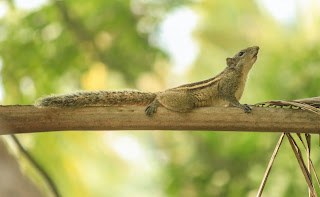If you are an English speaker, there is a good chance that you often use the words woods,forests, and jungles correctly without even thinking about it. Even if a piece of tree moves to an important part of your backyard, you will not consider it a forest. And you won't talk about the beautiful waterfalls in the jungles of New England. Based on these examples, it seems that the forest is smaller than the forest, and forests are not found in cold weather. That's not wrong — there's more to it than meets the eye.
These days, scientists, and land managers have certainly considered the presence of trees necessary to classify the earth as a forest. In order to separate it from forests or woodlands, it usually has to meet certain density requirements, which are different at your request.
According to the Food, and Agriculture Organization of the United Nations (FAO), a forest must cover an area of approximately 1.24 acres, and its roof cover must cover more than 10% of the area at risk. The “Other wooded land” should also cover an area of about 1.24 acres, but its roof cover is between 5 to 10 percent. In short, the FAO believes that forests and jungles are the same size, but forests are denser than forests. Australia, on the other hand, employs a plant ecologist, Raymond Speech's classification system for its plants, which is a forest with a tree-covered population of less than 30% and a more dense forest.
Unlike forests, jungle do not have specific scientific classifications because the word forest is not actually used by scientists. According to science, it is a colloquial term that generally refers to what scientists refer to as tropical forests.
deer
mice
bears
chipmunks
squirrels
owls
weasels
The tropics of the earth are between the equators and the equator. Forests in the tropics can be evergreen or thin. In the evergreen tropical forests, there is a range based on rainfall. Tropical rainforests receive a lot of rainfalls throughout the year. Driver Tropical evergreen forests receive seasonal rains. Both types of forests have different animal species, but both have relatively diverse species. In tropical rain forests, only half of the earth's population lives.
Tropical Rainforest Animals
Other mammals in the rainforest includes:
coati
rodents
bats
peccaries
flying squirrels
sloths
Animals of Drier Tropical Evergreen Forests
Smaller mammals of drier tropical evergreen forests include:
·
mice
·
macaques
·
gibbons
·
Phayre’s langur
·
Chinese pangolin
·
bushpig
·
wild dog
·
boar
·
jackals
·
civets
·
fruit bats
·
flying foxes
· squirrels
· mongoose
Challenges for Tropical Evergreen Forest Animals:
Animals in these regions face endless threats at their long-term survival. Human encroachment and road development are deforesting. Logging and logging can cause damage and disintegration of the dwelling. Farming methods also reduce roof damage and housing. Illegal hunting and poaching help to eradicate the species. With more sustainable strategies for conservation, education, and animal coexistence, the hope remains that people can work to protect tropical evergreen forests, and all the species within them.













1 Comments
very good information
ReplyDeletePlease do not enter any spam in the comment box.
Emoji